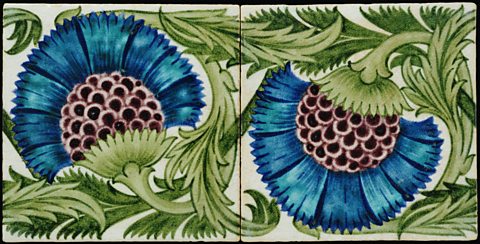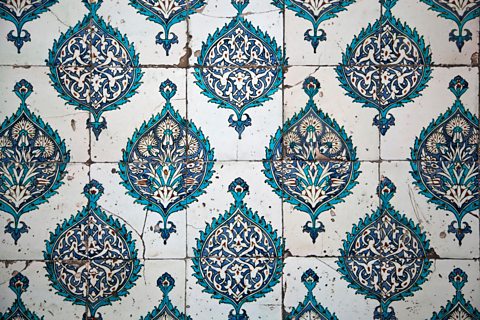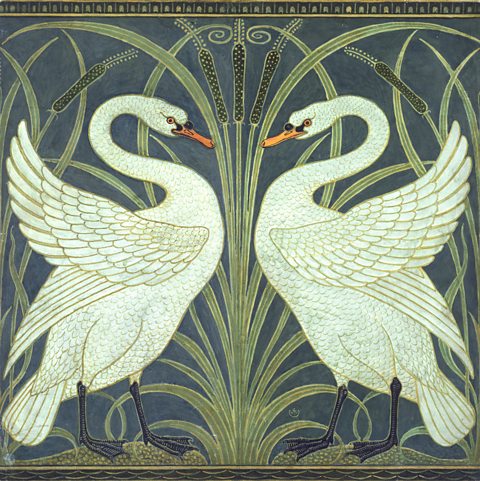Regular patterns

Patterns can be regular or irregular.
In regular patterns the motif (or motifs) is repeated in a way that is predictable.
It could be exactly the same each time, or it could change in a way that is regularly repeated.
There are many ways to arrange motifs to create a regular pattern.

Block repeat
The most basic way of creating pattern is to block repeat.
This is where the motif is repeated in exactly the same way in horizontal and vertical lines.

Each of these tiles from the Rustempaşa Mosque in Istambul can be seen as a motif of a central rosetteA round, stylised design, especially one that resembles a flower. with mirrored tulip shapes around it.
The tiles are arranged in a block repeat creating a regular pattern.

Rotational
A rotational pattern is where the motif has been rotated on its axis.
The motif may be rotated and repeated at any angle, but most designers will rotate at 90 or 180 degrees to make more uniform patterns.

These Cornflowers tiles (William De Morgan, 1898) have been designed to create a rotational pattern.
When rotated through 180 degrees, the leaves and stems create a seamless line across the join between the tiles.
A line of tiles would read as a continuous design but the rotational pattern adds variety and creates a more organicIrregular, flowing or relating to nature. In art and design, organic shapes, forms or lines are imperfect as opposed to perfect geometric elements. feel than a block repeat.

Half-drop
Half-drop patterns are made by dropping every second line of motifs down a half-length height of the motif.

These tiles from the Topkapi Palace in Istambul are arranged in a half-drop repeat.
The leaf-shaped motif is arranged so that alternate columns are staggered vertically by half the height of the motif.
The pattern is regular but feels more varied than a block repeat.

Mirrored
Another way of creating patterns is to mirror the motif.
Motifs can be mirrored horizontally or vertically.

Swan, Rush and Iris (Walter Crane, 1875) is a wallpaper pattern than uses a mirrored motif.
The swans and the leaf pattern behind are arranged around a vertical line of symmetry creating a well-balanced image.
